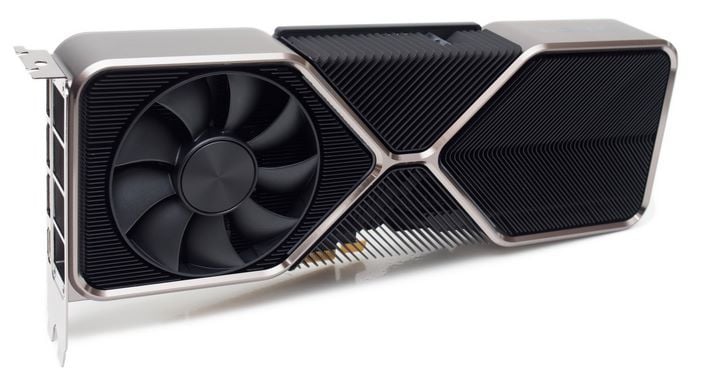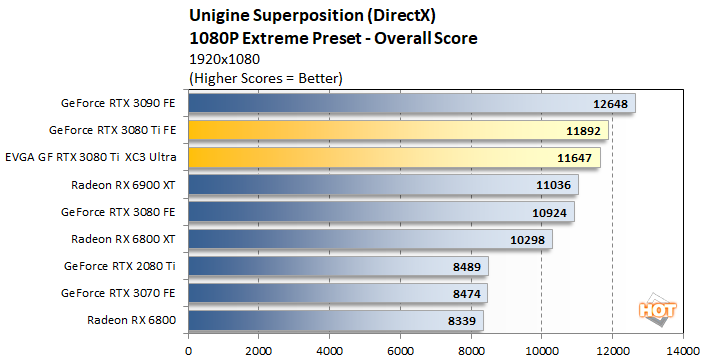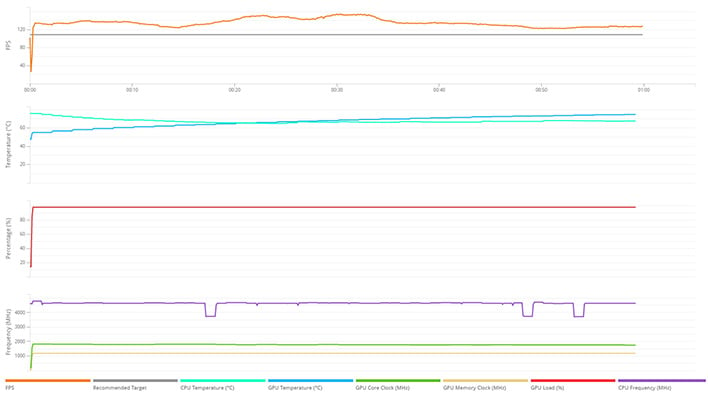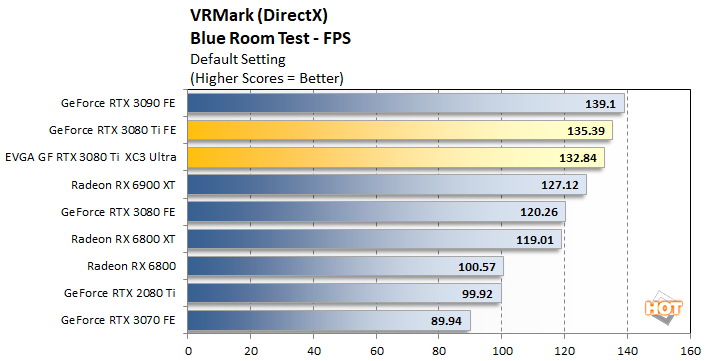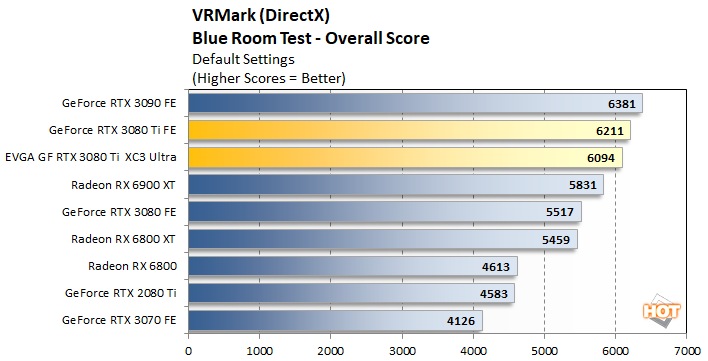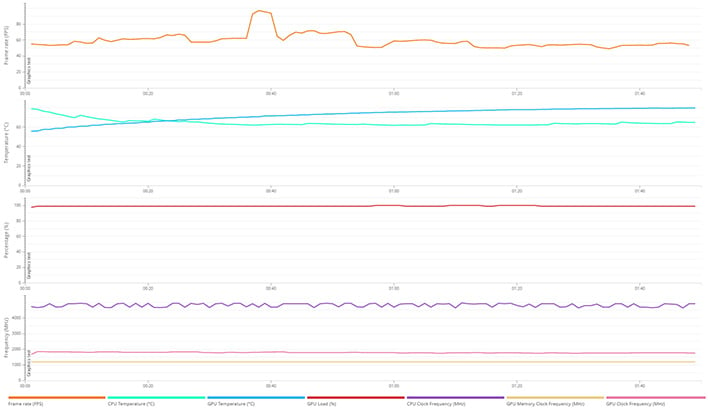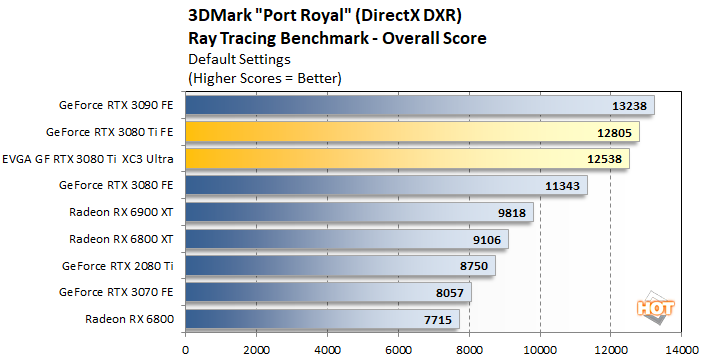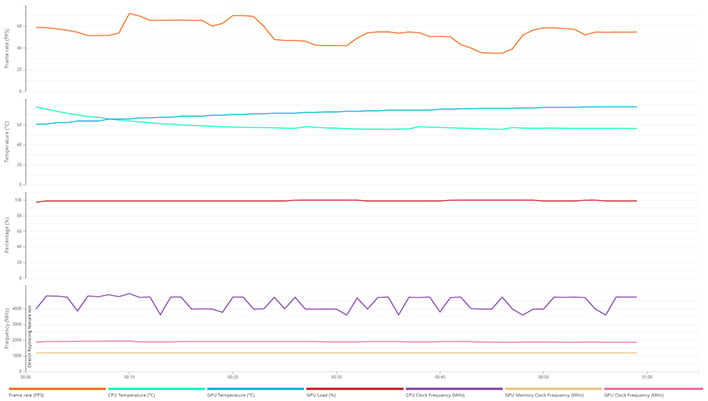NVIDIA GeForce RTX 3080 Ti Review: Amped-Up Ampere For Gamers
NVIDIA GeForce RTX 3080 Ti: UL 3DMark, Unigine, And Virtual Reality Benchmarks
How We Configured Our Test Systems: We tested the graphics cards represented in this article on a MSI X570 Godlike motherboard, equipped with a Ryzen 9 5950X and 16GB of G.SKILL DDR4 RAM clocked at 3,200MHz. The first thing we did when configuring the test system was enter the UEFI and set all values to their "high performance" defaults, then we disabled any integrated peripherals that wouldn't be put to use. The memory's clock was dialed in to its optimal performance settings using its XMP profile and the solid state drive was then formatted and Windows 10 Professional x64 was installed and fully updated. When the Windows installation was complete, we installed all of the drivers, games, applications and benchmark tools necessary to complete our tests. For all of the standard tests, the Radeon RX 6000 series cards were tested using their "Balanced" performance profile enabled in the driver and Resizable BAR / Smart Access Memory was enabled throughout.
|
|
|
| Hardware Used: AMD Ryzen 9 5950X (3.4GHz - 4.9GHz, 16-Core) MSI X570 Godlike (AMD X570 Chipset) 16GB G.SKILL DDR4-3200 Samsung SSD 970 EVO Integrated Audio Integrated Network NVIDIA GeForce RTX 3080 Ti FE EVGA GeForce RTX 3080 Ti XC3 Ultra NVIDIA GeForce RTX 3090 FE NVIDIA GeForce RTX 3080 FE NVIDIA GeForce RTX 3070 FE NVIDIA GeForce RTX 2080 Ti FE AMD Radeon RX 6800 AMD Radeon RX 6800 XT AMD Radeon RX 6900 XT |
Relevant Software: Windows 10 Pro x64 (v2004) AMD Radeon Software v21.3.2 NVIDIA GeForce Drivers v466.54 Benchmarks Used: VRMark 3DMark (Time Spy, Fire Strike, Port Royal, DXR) Unigine Superposition Crytek Neon Noir Metro Exodus Red Dead Redemption 2 Gears Tactics F1 2020 FarCry: New Dawn |
|
|
|
As their branding suggests, the new GeForce RTX 3080 Ti Founders Edition and EVGA XC3 Ultra slotted in right behind the GeForce RTX 3090, but ahead of the original RTX 3080 in Unigine Superposition's 1080P Extreme test. NVIDIA's newest flagship was also able to overtake the Radeon RX 6900 XT here.
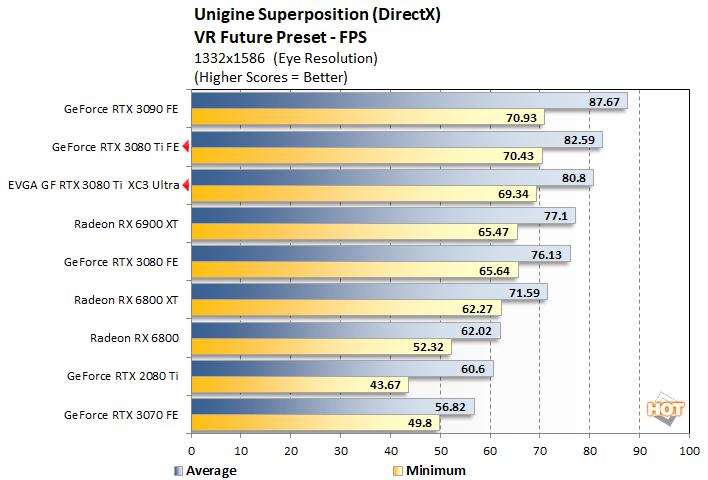
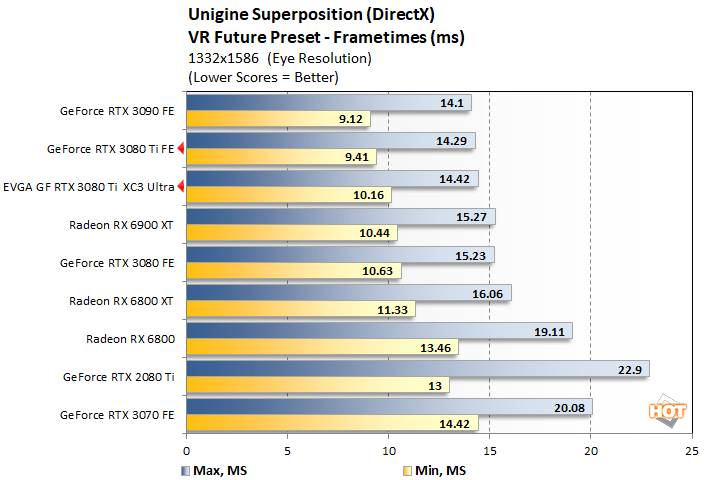
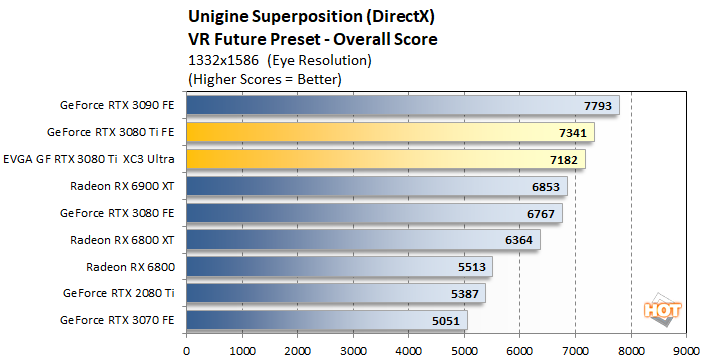
Superposition's VR Future benchmark tells essentially the same story, with the Founders Edition 3080 Ti and EVGA's offering clearly outpacing the GeForce RTX 3080 and Radeon RX 6900 XT, but not quite catching the beastly GeForce RTX 3090.
|
We're only a couple of benchmarks in and are already seeing a pattern. The new GeForce RTX 3080 Ti cards couldn't quite catch the GeForce RTX 3090, but again they were able to slot in ahead of AMD's flagship Radeon.
|

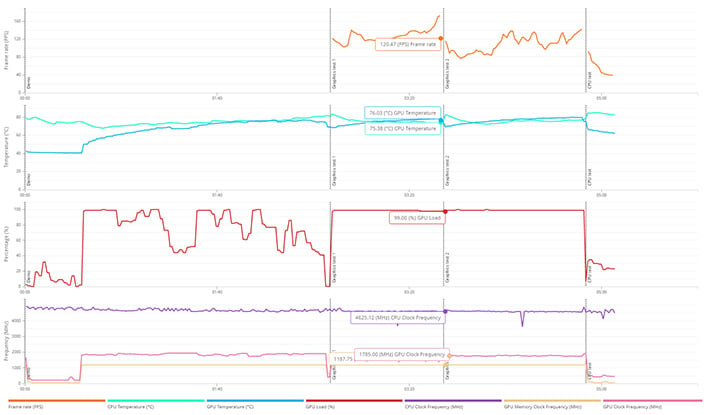
NVIDIA GeForce RTX 3080 Ti Time Spy Details
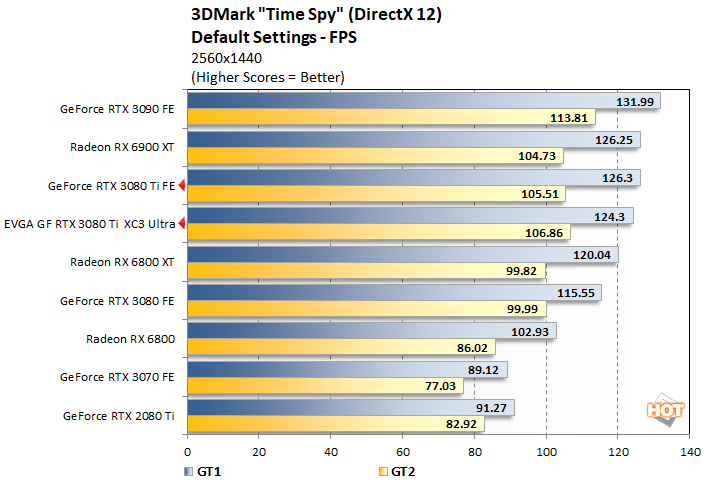
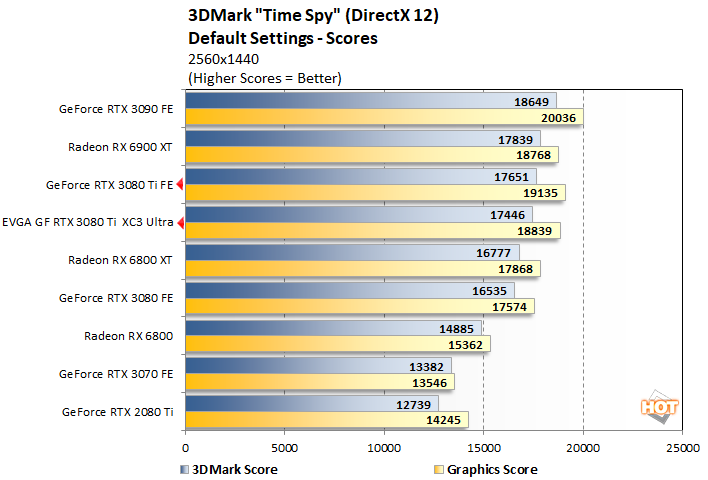
|
|
|
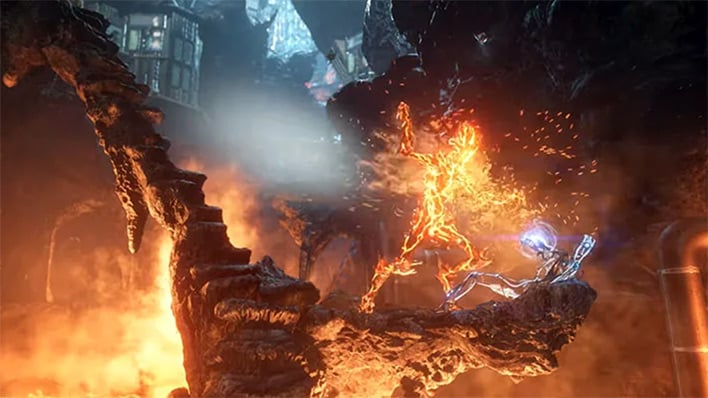
3DMark Fire Strike
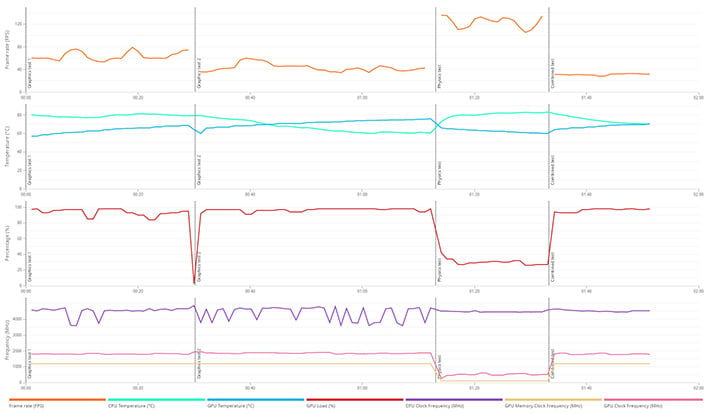
NVIDIA GeForce RTX 3080 Ti Fire Strike Details
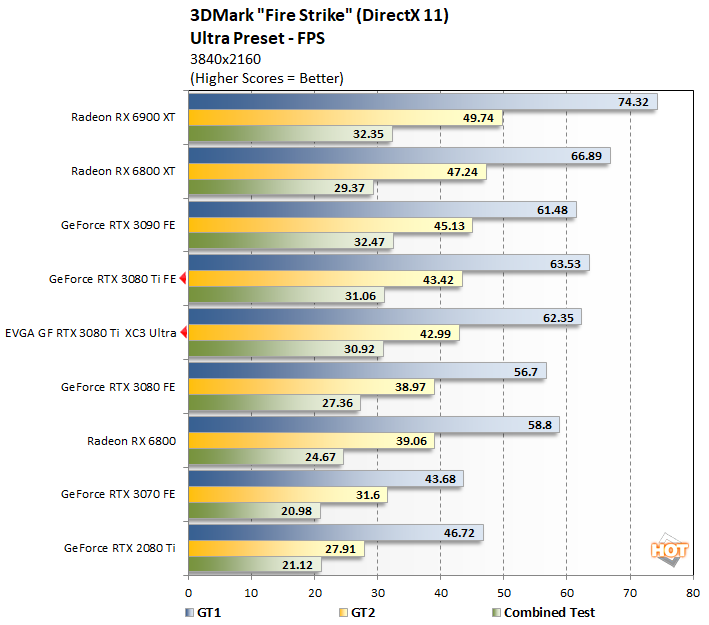
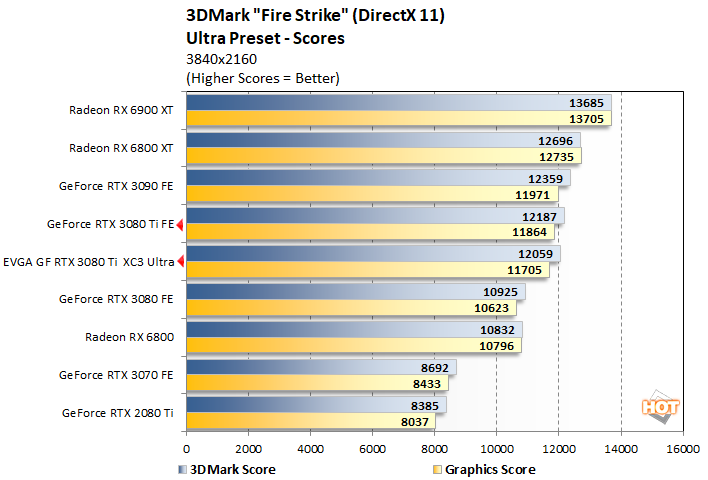
The new GeForce RTX 3080 Ti cards slot in behind the RTX 3090 and AMD's top end Radeon RX 6000 series cards in the Fire Strike benchmark. Performance is much closer to the RTX 3090 than it is to the RTX 3080, though.
|
We also did some testing with the more focused and demanding DirectX Ray Tracing Feature test, which was recently released as an update to 3DMark...
NVIDIA's Ampere architecture rules in the 3DMark DXR Feature test. In this benchmark, the GeForce RTX 3080 Ti cards finish just hair behind the RTX 3090, but nearly double the performance of AMD's Radeon RX 6900 XT and GeForce RTX 2080 Ti.

